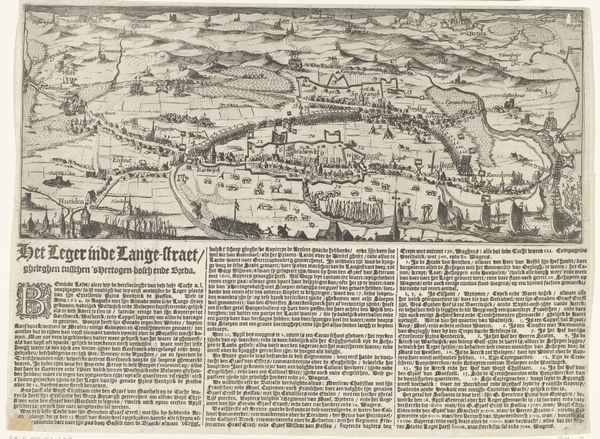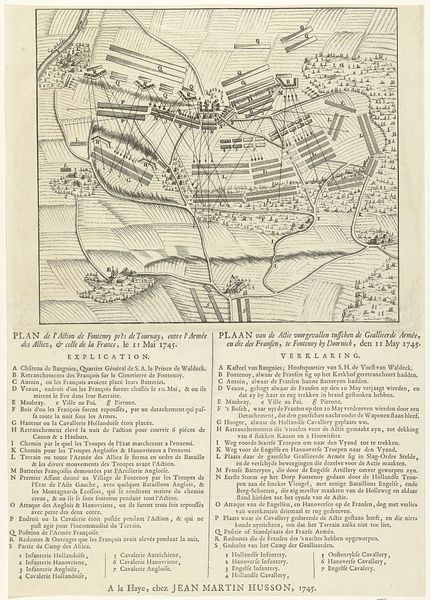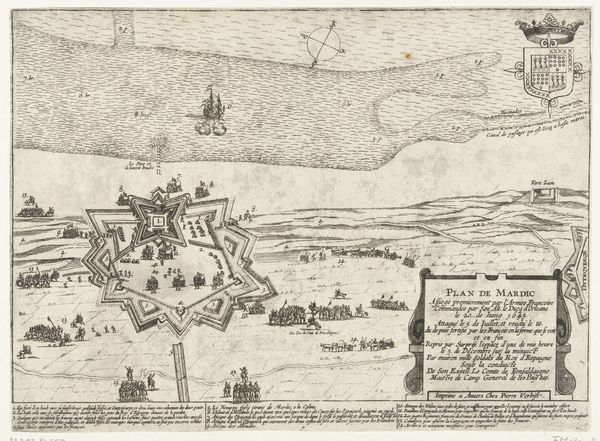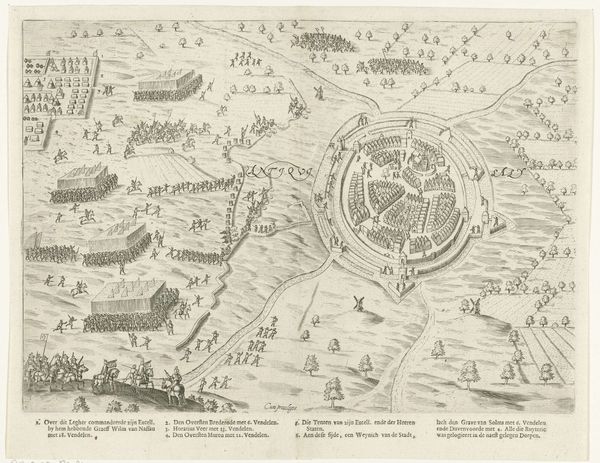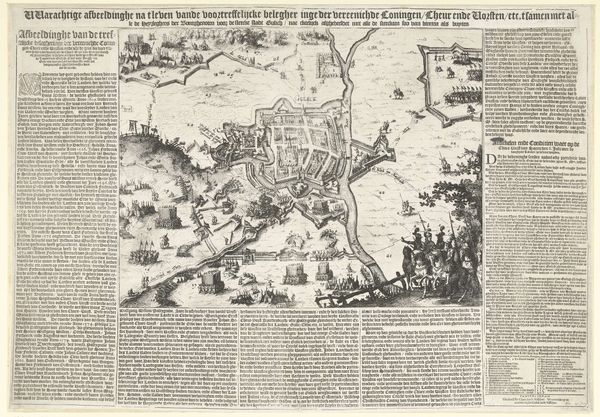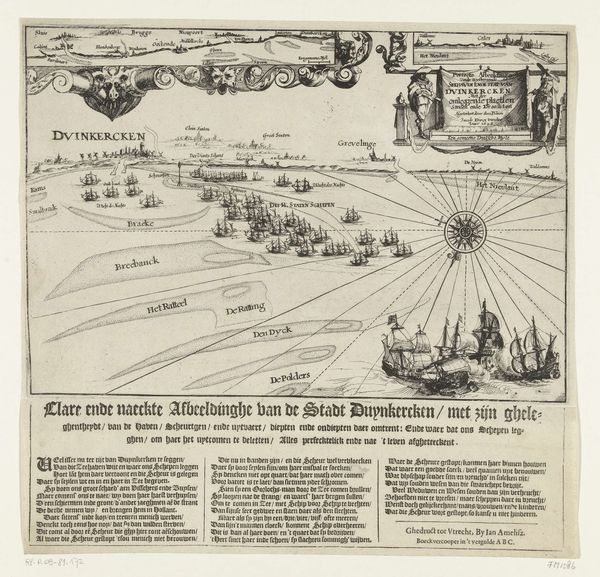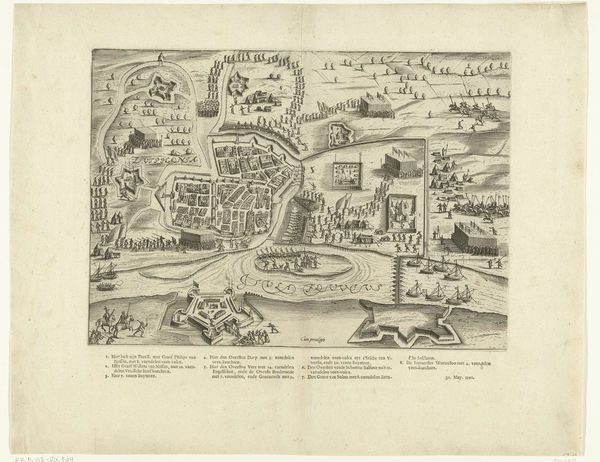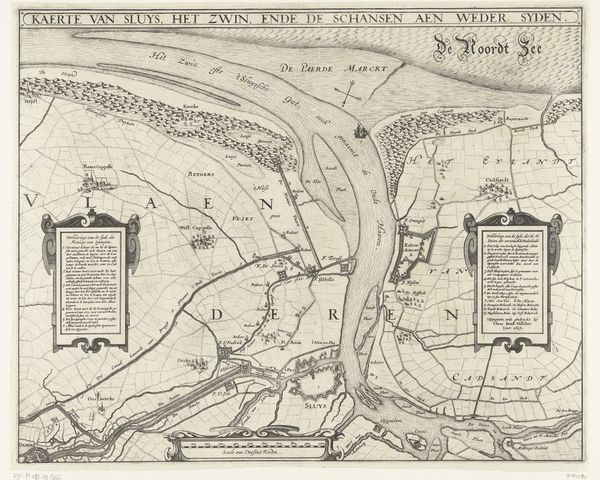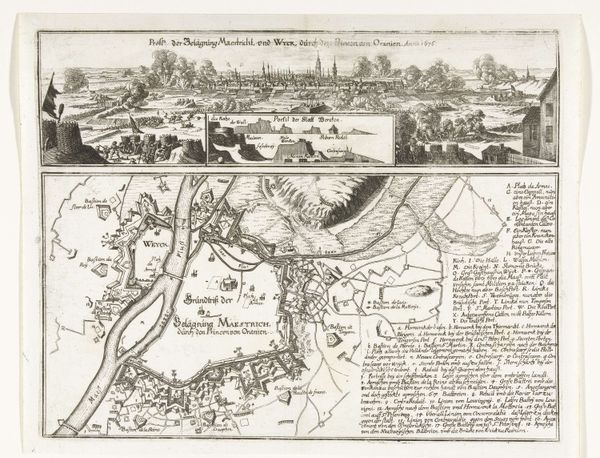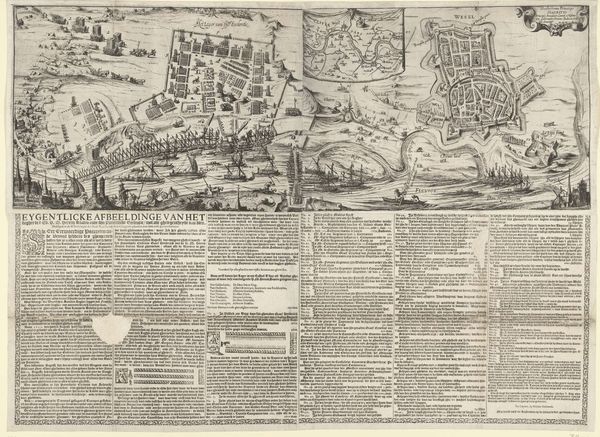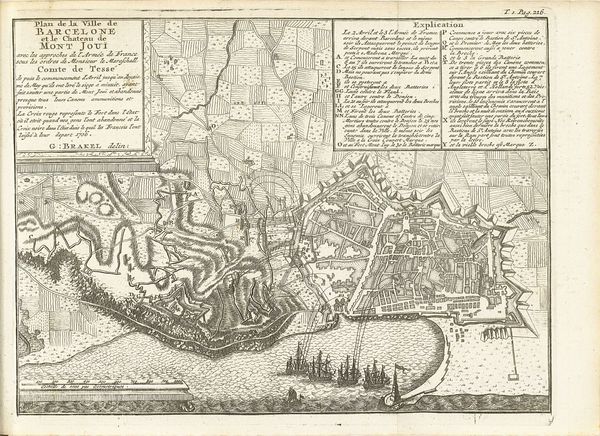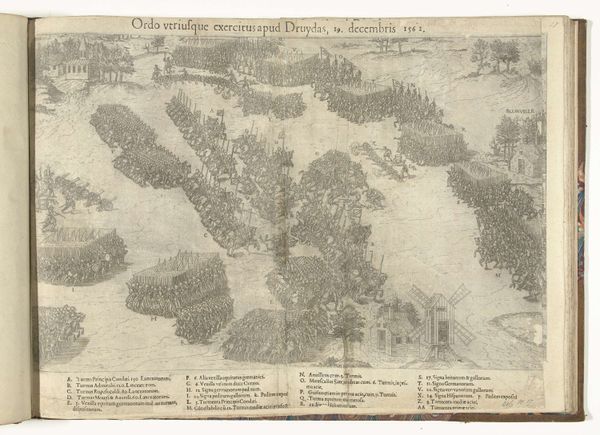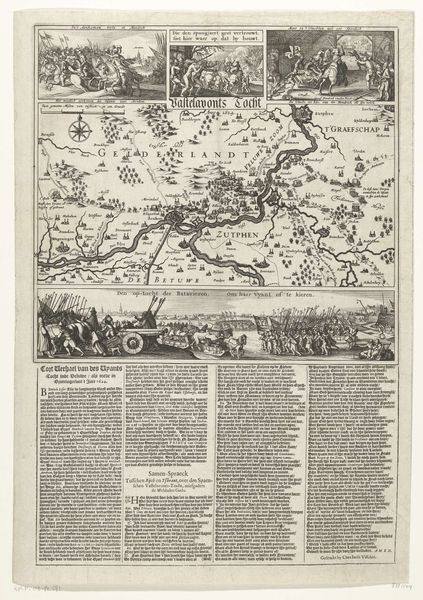
drawing, print, ink, engraving
#
drawing
#
baroque
#
dutch-golden-age
# print
#
pen illustration
#
landscape
#
ink line art
#
ink
#
cityscape
#
history-painting
#
engraving
Dimensions: height 297 mm, width 360 mm
Copyright: Rijks Museum: Open Domain
Editor: This is a print entitled "Beleg van Gulik, 1621" from 1621 by Nicolaes van Geelkercken. The detail is amazing! It’s almost like looking at a meticulously drawn map, but it also captures a sense of conflict. What stands out to you? Curator: This piece really exemplifies how art was often used to document and, in some ways, promote political agendas in the Dutch Golden Age. This isn't just a cityscape; it's a carefully constructed narrative. Notice how the attacking forces are prominently displayed, emphasizing their strength and organization. Where does the artist's apparent focus drive your understanding of its purpose? Editor: It definitely seems designed to showcase the military power. It almost feels propagandistic, showing a clear victor. Is that a common interpretation? Curator: Absolutely. Prints like these were often commissioned to celebrate victories and legitimize power. The precise details—the arrangement of troops, the fortifications—served to inform and impress the public, shaping their perception of the event and those in power. The inclusion of text reinforces the message, adding another layer of persuasive communication. What does its inclusion infer for how it was viewed then compared to now? Editor: So, it’s less about objective documentation and more about constructing a favorable image of the siege for the ruling class. Knowing this changes my perception quite a bit. I initially saw impressive detail; now, I see a political statement carefully crafted for public consumption. Curator: Precisely! By understanding the socio-political context, we can decode the visual language of the work and understand its function in its own time. Consider how public spaces were locations for performing, representing, and, most importantly, negotiating power. That's why studying history is as vital as studying artistic technique when we try to comprehend images from the past. What else have we learned today? Editor: I see it much clearer. This has deepened my understanding, and now I appreciate not only the skill of the artist but also the subtle, political intentions embedded in this "historical landscape" work.
Comments
No comments
Be the first to comment and join the conversation on the ultimate creative platform.

